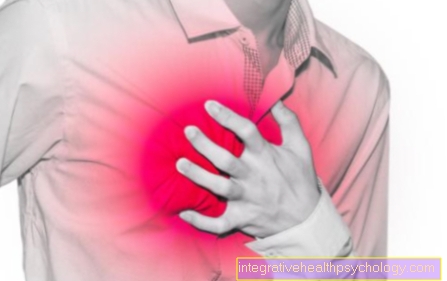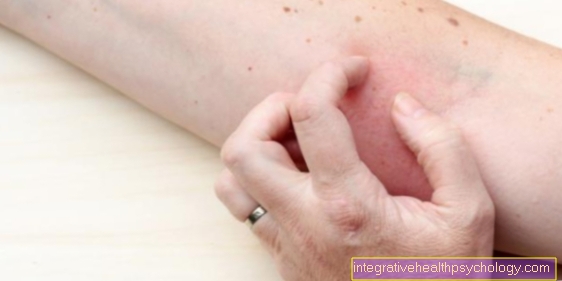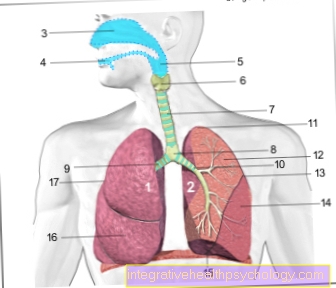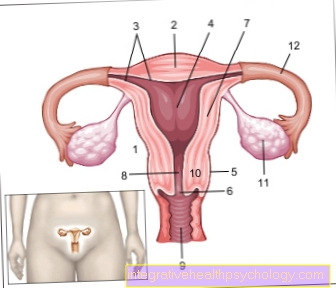Degrees of combustion
Synonyms in a broader sense
Burn trauma, burns, burn injury, Combustio, burn
English: burn injury
Classification and symptoms of the burn

Burns are divided into 3-4 degrees of severity, which depend on the depth of the destroyed skin layers and allow an initial prognosis of the healing prospects. The higher the temperature and the longer the exposure time to the body, the more severe the burn.
- Burn I °: It only affects the epidermis, is noticeable by redness, swelling and pain and usually heals completely. A more common 1st degree burn is sunburn.
- Burn II °: It reaches into the dermis, which contains small vessels for skin supply, as well as sebum and sweat glands, as well as the hair roots. The symptoms are severe pain, redness, swelling and blistering. Depending on the depth of the affected dermis, the 2nd degree burn is subdivided into type 2a, which usually heals completely like the 1st degree burn, as well as type 2b, which results in scarring.
- Burn III °: Here the subcutaneous tissue is also affected, whereby the intensity of the heat exposure often overcooked (white) and charred (black) Has left tissue. Since the cutaneous nerves are destroyed at this level, the patients usually no longer experience pain. Affected skin is irretrievably lost and has to be replaced with a transplant.
- Burn IV °: This is the most severe charring that has already reached not only the skin, but also any underlying tissue (muscles, bones).
Next to the Degree of burn will this also after the affected body surface judged. For adults here is the so-called Rule of nine used after the head, an arm, a front of a leg, a back of a leg, the chest, the abdomen, the upper back and the lower back 9% body surface area each be awarded. The missing percent represents that Genitals represent.
Another characteristic for assessing the severity is that Inhalation traumawhich at Inhalation in the immediate vicinity of fire or explosion comes about. In an adult, 15% or more of the body surface area is burned, or 7.5% or more with inhalation trauma, it is referred to as a severe burn; a patient with a severe burn should see a specialist Burn center especially when the face or genitals are involved.
From about 15% burned body surface after the accident what is called Burn diseasein which the entire organism suffers from the consequences of the burn. The burn itself and the destroyed skin areas cause one large fluid loss, which also affects the composition of the Blood affects and becomes one Volume depletion shock can lead. Many body proteins are also lost through damaged vascular barriers, whereby their respective function in the body is reduced and the Circulatory situation again burdened. Furthermore, there is a massive release of tissue components to which a body-wide immune reaction occurs. These are all causes of a looming Cardiovascular failure, a acute Lung failure, an acute one Kidney failure, a Liver failure as well as a Intestinal paralysis.
A another great danger is one for a heavier burn Infection of the affected skin areas, as their barrier function is limited or canceled. This can extend to Distribution of the germs throughout the body (sepsis) develop and is life-threatening.





























